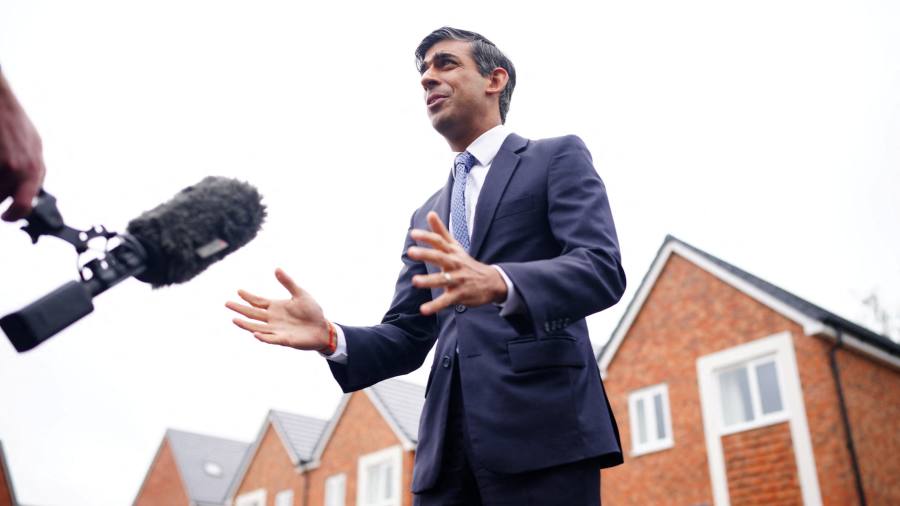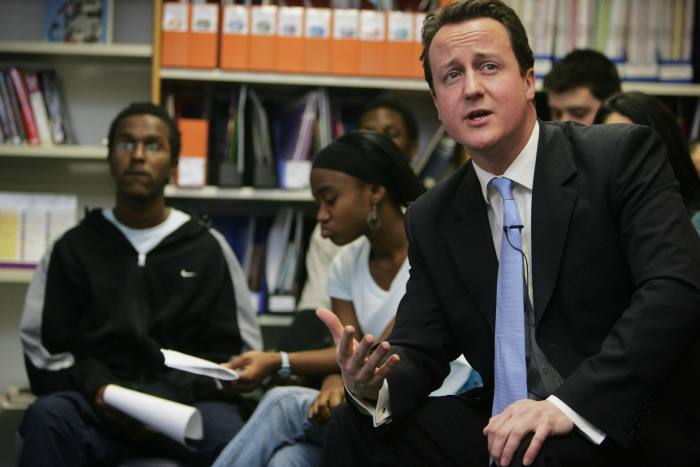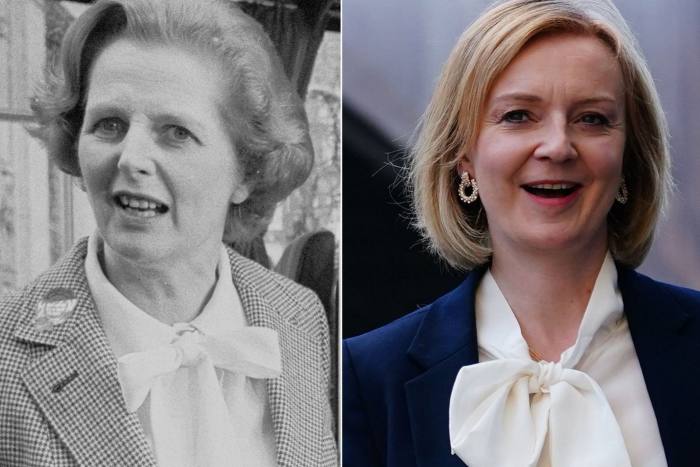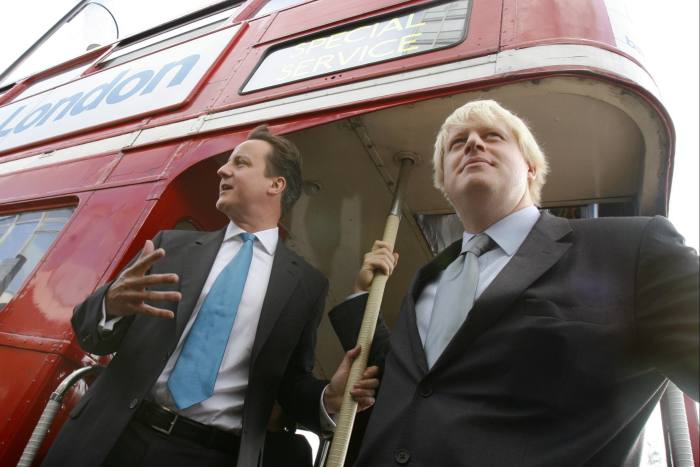
Receive free UK politics & policy updates
We’ll send you a myFT Daily Digest email rounding up the latest UK politics & policy news every morning.
This article is an on-site version of our Inside Politics newsletter. Sign up here to get the newsletter sent straight to your inbox every weekday
Good morning. We are now in August. Parliament is a ghost town, so I’ve written about how politicians dress and why it matters in today’s note. My pre-emptive apologies to readers without an interest in such matters, and in particular to some specific readers in Downing Street, the leader of the opposition’s office and in London’s City Hall.
Inside Politics is edited by Georgina Quach. Follow Stephen on Twitter @stephenkb and please send gossip, thoughts and feedback to [email protected]
Built to last
Like many dandyish men, one of my favourite Twitter accounts is that Derek Guy, an American menswear writer. I don’t always agree with Guy’s thoughts but I always enjoy reading them.
Lately, one of Guy’s regular targets is our prime minister, Rishi Sunak, who he insists dresses badly. He’s right. Sunak’s suits reflect the current fashion for slim-fitting attire with short trouser legs. These make two of Sunak’s assets — that he is slim and looks young for his age — into liabilities, because the combined effect is to make him look like a sixth-former who has outgrown his uniform.
There is a well-worn myth in Westminster that Sunak does this to make him look taller (he is a little over 5ft 6in). But this is not true and is not why Sunak looks taller than he is in many photos. Clever tricks with perspective, such as this masterful effort by the Treasury’s photographer, do that, but no number of ill-fitting suits can hide your height if the photographer is not on your side. Sadiq Khan and Keir Starmer are both short, too, and Khan’s Instagram in particular is a masterclass in how to make a short man look tall. But neither man wears ankle-swingers.
Sunak’s business attire doesn’t suit him for the same reason he has an excellent and flattering set of casualwear: Sunak is a close follower of trends in the US in general and California in particular. Precisely the things that Downing Street wants to play up about Sunak, and precisely the things that mean Joe Biden’s team like photographs with him: he is modern, interested in the technology and industries of the future, and so on. This is also why the prime minister is buying premium suits that do not suit him. Guy is right to say that Sunak should instead buy bespoke suits (excellent piece by Isabel Berwick on the comfort and joy of just that activity here).
But the purpose of a politician’s outfit is not to make them look good. It is to convey a message about the politician in question. David Cameron is nowhere near as rich as Sunak, but like Sunak he wore clothes that were much less nice than he could afford. But Cameron did this deliberately. In his first phase as leader of the opposition, he wore suits that looked a little too large for him, and would have suited a man with a somewhat broader frame. In fact they did suit a man with a broader frame, and that man was Tony Blair.

Cameron’s suits embodied the message that he wanted to send: that he was the heir to Blair. Later, Cameron bought off-the-peg suits that any middle-class professional could afford. This was part of the same neurosis his inner circle had about appearing to be posh — which led him to forgo wearing a tailcoat to a family wedding and made his team fret about royal occasions. Again, the suits were not top-notch but the commitment to his political message was.
Nor is this confined to male politicians. Margaret Thatcher, with the assistance of a team of advertisers, consciously remade her own image, in a way that aped the style of Barbara Castle — the Labour party MP who was, at the time, one of the most popular female politicians in the country. When Liz Truss ran for Conservative leader, she in turn imitated Thatcher’s dress, which attracted scorn in much of the press but sent a deliberate message to Conservative party members about her politics and approach.

On the Labour side, because of Thatcher’s success in building upon the Castle imprint, female Labour politicians have often complained about the struggle to find a style that is both feminine and avoids Thatcher comparisons (a comparison that would be harmful politically). Many still ape the look devised by Barbara Follett when Labour was seeking to make its image more professional in the 1980s — it’s an image that you probably most closely associate with Harriet Harman, and whose style still heavily influences many Labour politicians today.
Not all of this stuff is conscious, mind you. Starmer’s sensible suits convey the same “Labour: now non-threatening!” message he wants to pitch to the electorate, not because Starmer chooses his suits accordingly, but because Starmer is a successful middle-class British professional and dresses as such.
But it is a testament to the importance of political dress, and also its contradictions, that the most effective political dresser of recent times is also one of the worst: Boris Johnson. His carefully cultivated image as an unconventional politician who “tells it how it is”, and wasn’t “like the others” was boosted by his shabby outfits and unkempt hair. It gave him an air of being a different kind of Tory, despite the fact he was the darling of much of the Conservative party and very much a Cameron moderniser. That reputation helped him get away with all sorts of things for a long time, both in the country and in the party, including the big spending commitments in the 2019 manifesto (here’s George Parker and Sebastian Payne’s compelling profile of him in July of that year).

Why does this matter? Because as the age of the TV politician ends and the era of the influencer politician emerges, how politicians dress is going to become an even more important part of how they convey their aims and values. Sunak’s ill-fitting suits are a curiosity but they don’t actively harm him politically. Thoughtless dressing will, in the coming years, become more of a risk for politicians, not less of one.
Now try this
I will be wearing a loud suit indeed at this year’s FT Weekend Festival in September (get £20 off your ticket pass here). I have my eye on something from Ohema Ohene, a label that combines British and Ghanaian themes. My big regret is their shoes don’t come in a size big enough to fit my galumphing clown feet. If you or someone you love has big feet, let me know where you get your shoes.
For more on the business of style, Lauren Indvik’s multi-award-winning weekly newsletter Fashion Matters has you covered (FT subscribers can sign up here).
Top stories today
Climbdown over post-Brexit product mark | Britain has retreated on its plan for a post-Brexit rival to the EU’s “CE” product quality mark after business leaders warned ministers it was tying up manufacturers in red tape.
Grim toll | The severe human toll of cuts to the UK’s foreign aid budget on women and children, disabled people and LGBT+ communities has been laid bare by an internal government impact assessment.
Transformative approach needed | The government is set to back plans intended to halve the 14 years it currently takes on average to deliver the big electricity transmission projects needed to overhaul the UK’s energy system.
‘Floating Grenfell?’ | The UK government has been forced to delay using a barge leased to house asylum seekers in southern England because of concerns over its compliance with fire and safety rules in the latest setback to plans to toughen up conditions for migrants.
The sunshine millionaire who cheated a council | A rogue businessman appears to have cheated a council in Essex out of as much as £130mn and spent the money on a life of luxury, in potentially the largest fraud ever committed against a UK local authority, the Bureau of Investigative Journalism revealed.
Recommended newsletters for you
One Must-Read — Remarkable journalism you won’t want to miss. Sign up here
Britain after Brexit — Keep up to date with the latest developments as the UK economy adjusts to life outside the EU. Sign up here

